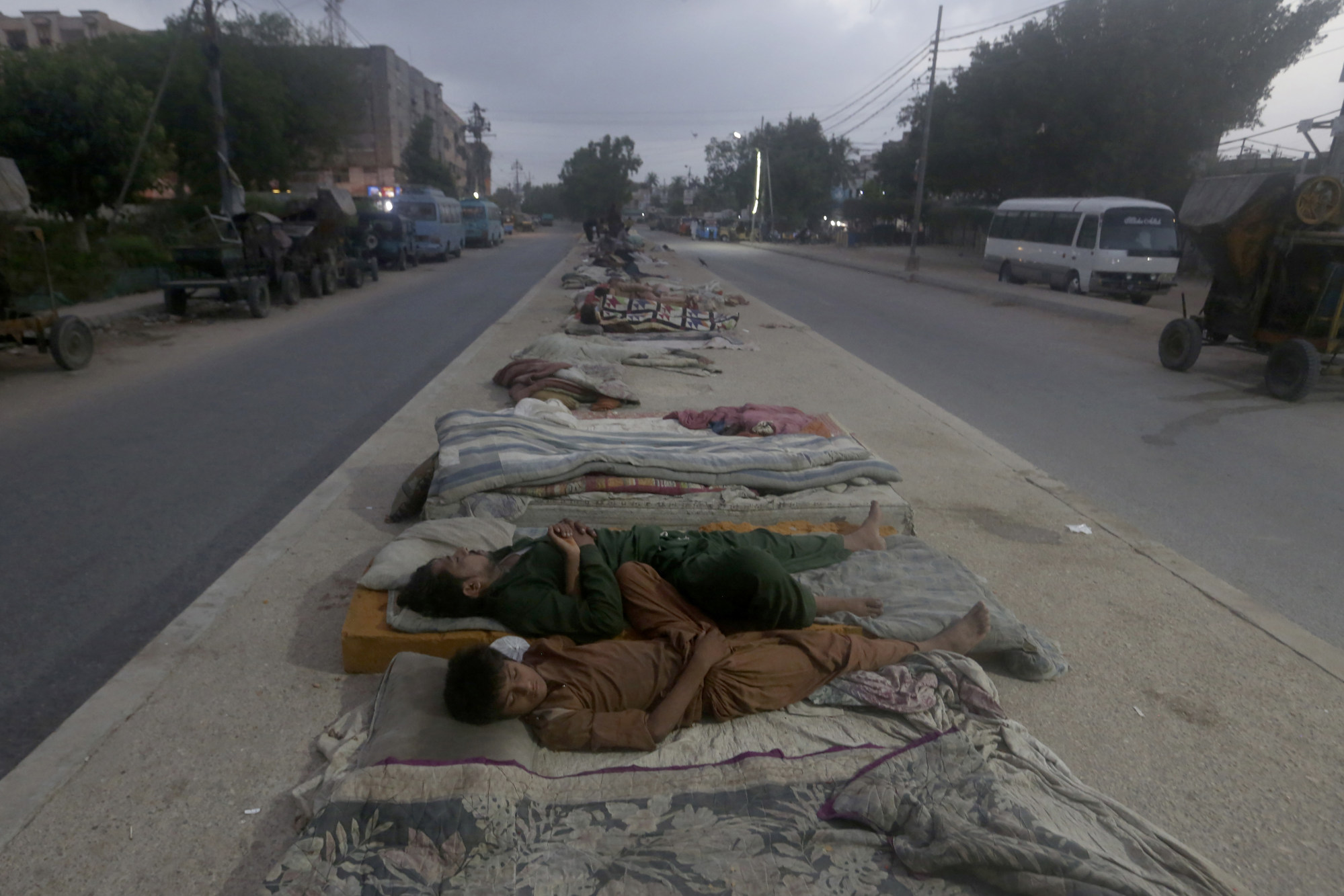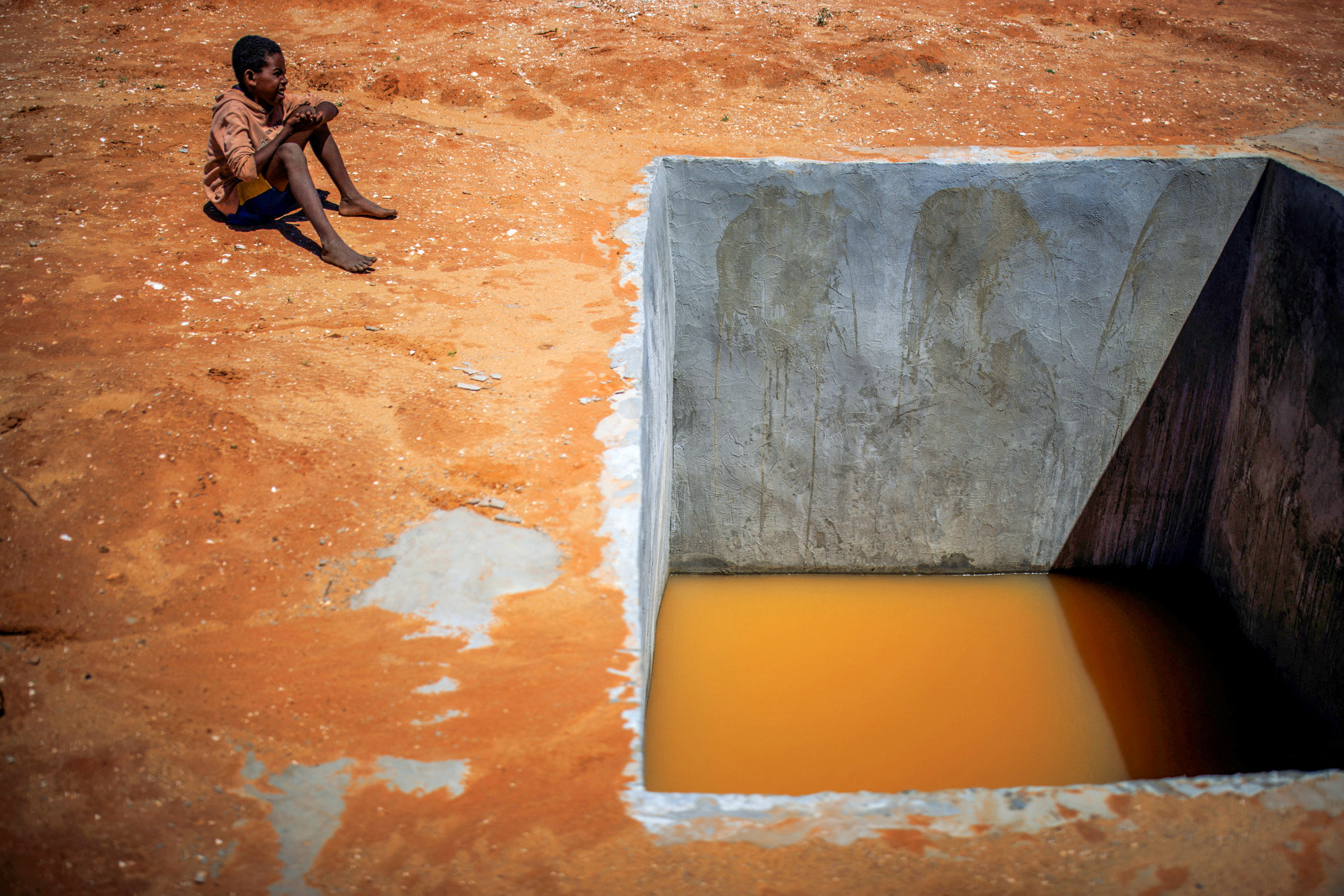
Pakistan braces for 50-degree weather amid worsening heatwaves, climate change
- Pakistan faces an existential crisis as temperatures reached 48 degrees in part of the country on Thursday, and may reach 50 in the coming days
- On Wednesday experts said that all heatwaves today bear the unmistakable and measurable fingerprint of global warming
Pakistan’s southern Sindh province on Thursday put emergency services on high alert as another heatwave hit the South Asian nation with temperatures expected to climb as high as 50 degrees.
The Sindh government ordered the setting up of a dozen first response centres in the port city of Karachi where a combination of a tropical depression and humidity could make the heatwave deadly, local official Ali Sajjid said.
Karachi, one of the most populous cities in the world with more than 20 million residents, witnessed a severe heatwave in 2015 that left over 1,200 people dead.

Both Pakistan and India have been in the grip of heatwaves since March, a phenomenon experts say simply reflects the reality of climate change.
Temperatures reached 48 degrees in some cities in Pakistan on Thursday and might reach 50 in coming days, metrological official Sardar Sarfraz said, adding that the heatwave was expected to last until Tuesday.
The provincial authorities have ordered hospitals to set up special units to treat victims of heatstroke and have advised people to stay indoors and avoid exposure to the sun.
Pakistan’s climate change minister Sherry Rehman said on Thursday the country faces an existential threat from global warming.
‘It’s too much’: As India swelters, the poorest suffer most
The South Asian nation is ranked eighth in a list of countries most vulnerable to the effects of climate change, despite being responsible for less than 1 per cent of all global carbon emission.
Scientists attribute Pakistan’s vulnerability to climate change to its proximity to both China and India, which are both highly industrialised societies, as well as fast melting glaciers in the Himalayas.
On Wednesday, top experts on quantifying the impact of climate change on extreme weather said all heatwaves today bear the unmistakable and measurable fingerprint of global warming.

Burning fossil fuels and destroying forests have released enough greenhouse gases into the atmosphere to also boost the frequency and intensity of many floods, droughts, wildfires and tropical storms, they detailed in a state-of-science report.
“There is no doubt that climate change is a huge game changer when it comes to extreme heat,” Friederike Otto, a scientist at Imperial College London’s Grantham Institute, told Agence France-Presse.
Extreme hot spells such as the heatwave that gripped South Asia in March and April are already the most deadly of extreme events, she added.
Global assets worth up to US$12.7 trillion exposed to climate risks, report says
“Every heatwave in the world is now made stronger and more likely to happen because of human-caused climate change,” Otto and co-author Ben Clarke of the University of Oxford said in the report, presented as a briefing paper for the news media.
Evidence of global warming’s impact on extreme weather has been mounting for decades, but only recently has it been possible to answer the most obvious of questions: To what extent was a particular event caused by climate change?
The most scientists could say before is that an unusually severe hurricane, flood or heatwave was consistent with general predictions of how global warming would eventually influence weather.

News media, meanwhile, sometimes left climate change out of the picture altogether or, at the other extreme, mistakenly attributed a weather disaster entirely to rising temperatures.
With more data and better tools, however, Otto and other pioneers of a field known as event attribution science have been able to calculate – sometimes in near real time – how much more likely or intense a particular storm or hot spell has become due to global warming.
Otto and colleagues in the World Weather Attribution (WWA) consortium, for example, concluded that the heatwave that gripped western North America last June – sending temperatures in Canada to a record 49.6 C (121F) – would have been “virtually impossible” without human-induced climate change.
Why capitalism must change to survive new climate change-driven world
The heatwave that scorched India and Pakistan last month is still under review, Otto said, but the larger picture is frighteningly clear.
“What we see right now in terms of extreme heat will be very normal, if not cool, in a 2-degree to 3-degree Celsius world,” she said, referring to average global temperatures above preindustrial levels.
The world has warmed nearly 1.2C so far.
That increase made record-setting rainfall and flooding last July in Germany and Belgium that left more than 200 dead up to nine times more likely, the WWA found.
But global warming is not always to blame.

A two-year drought in southern Madagascar leading to near famine conditions attributed by the UN to climate change was in fact a product of natural variability in the weather, experts reported.
Quantifying the impact of global warming on extreme weather events using peer-reviewed methods has real-world policy implications.
Attribution studies, for example, have been used as evidence in landmark climate litigation in the United States, Australia and Europe.
In one case set to resume later this month, Saul Luciano Lliuya v. RWE AG, a Peruvian farmer is suing the German energy giant for the costs of preventing harmful flooding from a glacial lake destabilised by climate change.
A scientific assessment entered into evidence concluded that human-caused global warming is directly responsible for creating a “critical threat” of a devastating outburst, putting a city of some 120,000 people in the path of potential floodwaters.
Additional reporting Agence France-Presse

